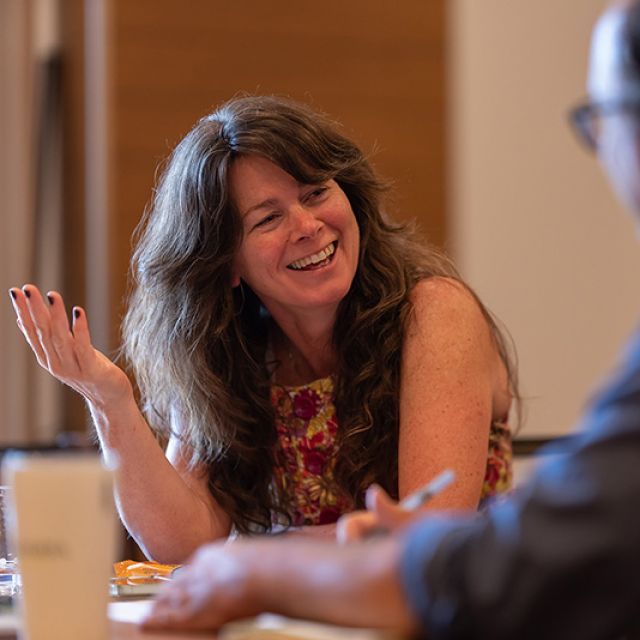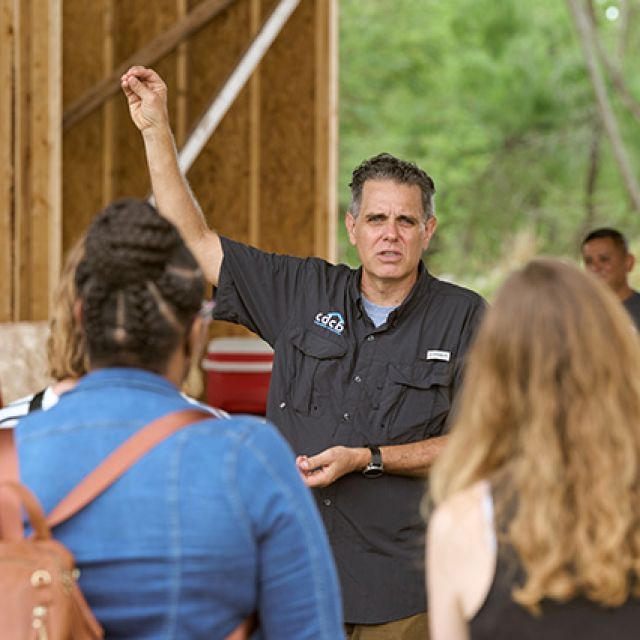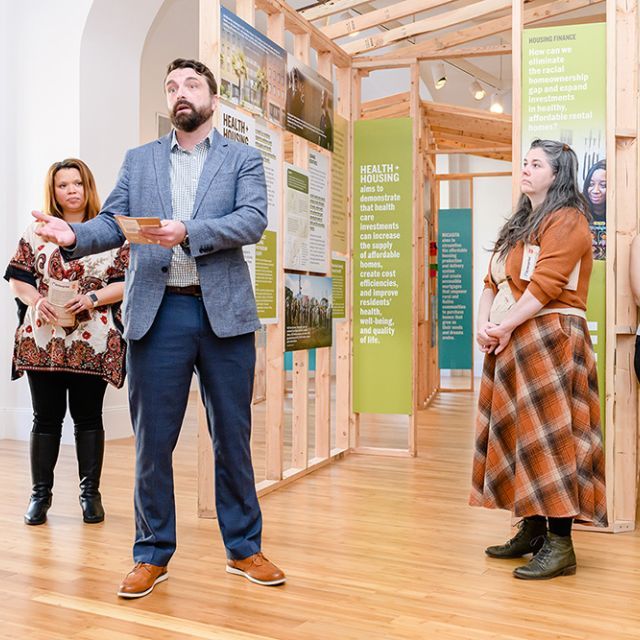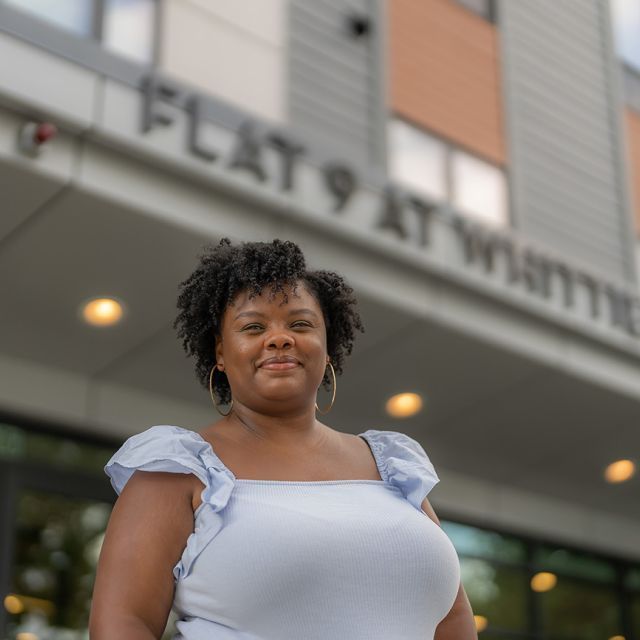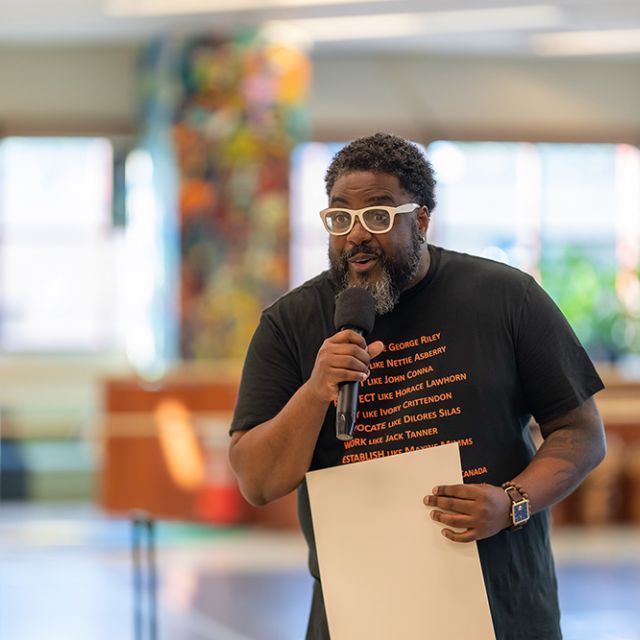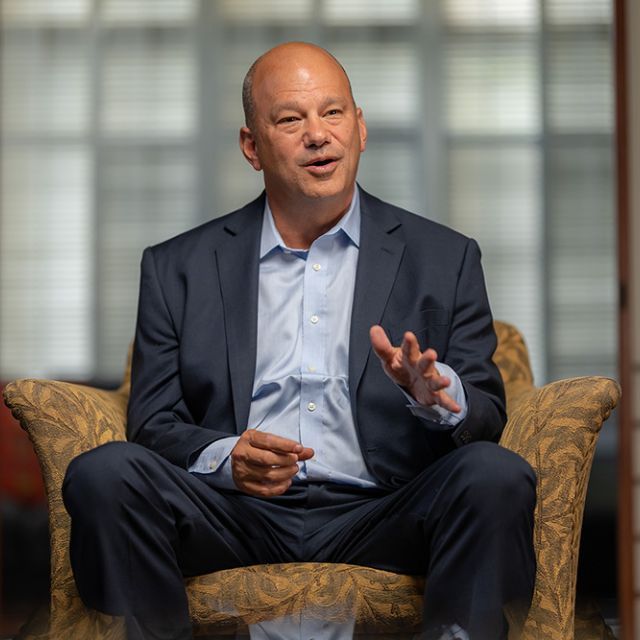Project Waves Kick-Off At Ashland Commons
New Policy Brief: Recommendations for Communities Facing Climate Migration
Eight Ways Receiving Communities Can Prepare for Climate Migration
See How it Works
"Second Look is an innovative, automated underwriting system," says Center for NYC Neighborhoods CFO Natasha Pallan. "It can assist banks in reducing the cost and speeding the process of underwriting loans to families in the low- to middle-income bracket. And a key part of that is Black and Brown families."
Innovation Milestones
Center for NYC Neighborhoods completed work on its Second Look innovation in December 2022, providing a tool for users to take a second look at denied mortgages. The team is using two computer programs to put Second Look into practice – Meridian Link to reissue credit reports and Form Free, which allows them to gather rental payments.
Second Look has been demoed and discussed with key partners, including the State of NY Mortgaging Agency (SONYMA), Fannie Mae, the Urban Institute, and HUD. Together, they have examined the challenges of using alternative credit data and the best approaches to incorporating that data into Underwriting for Good toward closing the racial wealth gap and increasing homeownership rates among people of color and people with modest means.
The Center’s key partners on Second Look included Decision Science Analytics and Mountain View Advisors.
See How it Works
A key aspect of MiCASiTA (which has evolved to become DreamBuild) is a financing component – education and a loan product – that allows families to grow their homes as their finances improve and to build equity through homeownership.
“Most people want a home for their kids – a beautiful home that they’re proud of,” says cdcb Director of Homeownership Linda Marín. “If a client is not financially able to get their dream home, we can start with something smaller and work toward getting to the dream.
Innovation Milestones
MiCASiTA homes are built at a Brownsville, Texas, manufacturing site known as “the farm.” Production at the barn-like facility creates local jobs and minimizes the cost of transporting the modular homes to nearby communities.
Homes are slated to meet Enterprise Green Communities certification, and are built without proprietary materials, specialized machinery, or 3D printing. The delivery model is designed to be replicable and scaled to communities across the country.
Evelio and Gloria Palacios became the first family to move into a MiCASiTA home this spring, with more homes currently under construction.
cdcb and bcWORKSHOP have hosted two expansion summits to introduce the MiCASiTA model to housers from Appalachia, the Mississippi Delta, Indian Country, and the Gulf Coast. They also launched a manufacturing course this spring toward scaling the innovation to other markets.
See How it Works
Gulf Coast Housing Partnership’s Health + Housing innovation creates new financing options for health insurers to invest in affordable homes with integrated health and services. See how this innovation is coming to life in two new housing developments – H3C in New Orleans and The Pearl, nearing completion in Jackson, Miss.
Innovation Milestones
In January 2024, Gulf Coast Housing Partnership celebrated the opening of its first Health + Housing pilot, H3C, in New Orleans, with Medicaid Managed Care Organization partner Aetna/CVS Health. H3C features 192 affordable housing units. DePaul Community Health Center operates an adjoining Federally Qualified Healthcare Center (FQHC).
The Pearl in Jackson, Mississippi, Gulf Coast Housing Partnership’s second Health + Housing pilot, broke ground in November 2022. Financial supporters include UnitedHealthCare Community Plan of Mississippi. Slated to open in early 2024, the project will transform a long-vacant hotel into 76 affordable apartments for seniors. Jackson-Hinds Comprehensive Health Center will operate an on-site FQHC and oversee a team of community health workers to support residents’ health and well-being.
See How it Works
Preservation of Affordable Housing’s innovation draws on new insights into how trauma impacts the body and brain to create communities where economic mobility is the long-term goal and residents and staff can truly thrive.
Innovation Milestones
With support from the Breakthrough Challenge, Preservation of Affordable Housing engaged four teams of residents and frontline staff across diverse communities to co-design its Trauma-Informed Housing innovation using trauma-informed approaches to building design, resident services, property management, and human resources.
Teams drew on community-based research, collective brainstorming and creative prototyping to test new ideas for community change that address root causes, not surface symptoms.
Through collaborative co-design, Trauma-Informed Housing gives residents and frontline staff opportunities to reshape their communities to promote well-being and equity for everyone.
POAH’s partners on the innovation included Design Impact, MASS Design Group, Center for Trauma-Informed Innovation, Stewards of Affordable Housing for the Future, and Community Services League.
POAH’s learning is packaged into a playbook for other owners to adopt and adapt in their work.
See How it Works
“This innovation has been a catalyst to affect much more than a mass-timber supply chain,” said Hillary Wilson, Forterra’s former director of venture philanthropy. “We are trying to achieve both racial equity and environmental sustainability, creating a system that does not take away from community or nature.”
Innovation Milestones
Forterra formed a cross-laminated timber coalition in 2015 to catalyze a mass-timber market in Washington. Three years later the CLT coalition successfully advocated for a change in Washington’s state building code to allow for tall mass-timber buildings.
In 2021, Forterra successfully completed the first modular CLT prototype in the U.S. with support from the Housing Affordability Breakthrough Challenge. CLT is the structural basis for high-quality sustainable modular homes.
With prefabricated modular homes constructed out of CLT panels and delivered to job sites prebuilt, CLT modules significantly reduce costs associated with on-site construction.
See How it Works
Impact Justice imagines, builds, and scales innovations that advance safety, justice, and opportunity by creating boundary-breaking programs that are changing expectations about what people can accomplish together.
Inspired by the sharing economy, their Homecoming Project is one such innovation, offering a unique model of re-entry housing.
Innovation Milestones
In 2023, the Homecoming Project will reach a key milestone: 100 participants housed in California’s Alameda and Contra Costa Counties. To date, 100% of participants have graduated with long-term living arrangements. Ninety-five percent of participants had secured employment by the end of the six-month program. And 0% have recidivated.
Impact Justice is expanding the Homecoming Project beyond the Bay Area to Los Angeles and other parts of California. The program aims to be an inspiration and model for communities across the country by sharing tools and insights on matching homeowners and participants and partnering with community members and organizations.
Key partners on the innovation include the California Workforce Development Board, California Community Reinvestment Grants Program, California Board of State and Community Corrections, Conrad N. Hilton Foundation, and Menorah Park Community Impact Fund.
For hosts, who are predominantly people of color from low- to moderate-income households, the cash stipend they receive provides extra income and keeps capital in the local community. With these additional dollars, local homeowners and their communities are more resilient in the face of rising costs and better equipped to remain in their homes despite pressures of gentrification.



